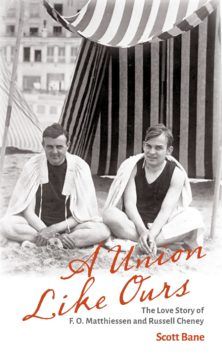Scott Bane at The Millions:
 American Renaissance: Art and Expression in the Age of Emerson and Whitman remains Matthiessen’s best-known work. Published in 1941, it surveys the writing of Emerson, Thoreau, Hawthorne, Melville, and Whitman, who published many of their seminal works in the window of 1850 to 1855, in the run-up to the Civil War. The book contributed to the birth of American Studies and secured Matthiessen’s reputation as one of the leading critics of his day. But since the peak of Matthiessen’s popularity in the early-to-mid 20th century, literary scholarship and studies has largely moved on. Matthiessen’s understanding of canonical literature skewed white and male, whereas most critics and writers today debate the relevancy of a canon in the first place, much less who gets into it. Despite some of its outdated views, the book undeniably helped shape a new discipline—a rare feat, especially in the humanities—so Matthiessen has remained a force to contend with in scholarly debate, even if only to react against his ideas and literary judgments.
American Renaissance: Art and Expression in the Age of Emerson and Whitman remains Matthiessen’s best-known work. Published in 1941, it surveys the writing of Emerson, Thoreau, Hawthorne, Melville, and Whitman, who published many of their seminal works in the window of 1850 to 1855, in the run-up to the Civil War. The book contributed to the birth of American Studies and secured Matthiessen’s reputation as one of the leading critics of his day. But since the peak of Matthiessen’s popularity in the early-to-mid 20th century, literary scholarship and studies has largely moved on. Matthiessen’s understanding of canonical literature skewed white and male, whereas most critics and writers today debate the relevancy of a canon in the first place, much less who gets into it. Despite some of its outdated views, the book undeniably helped shape a new discipline—a rare feat, especially in the humanities—so Matthiessen has remained a force to contend with in scholarly debate, even if only to react against his ideas and literary judgments.
Despite Matthiessen’s wealthy family and his privileged path to the ivory tower of academia, he was an ardent socialist activist and champion of economic equality.
more here.
